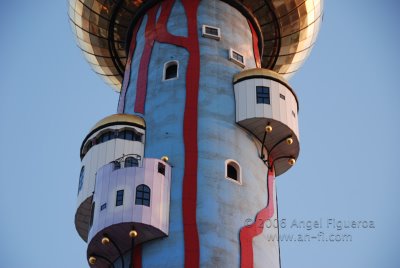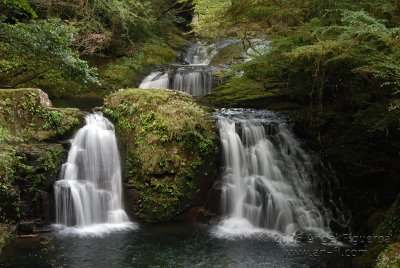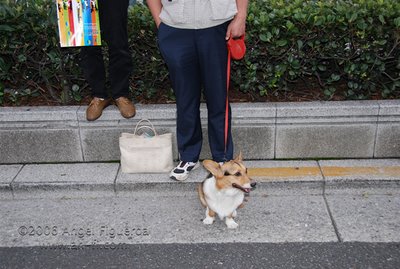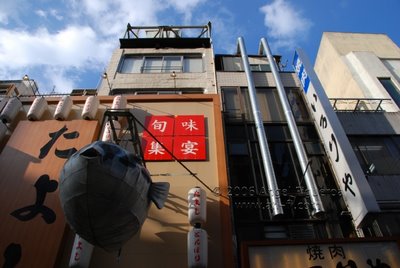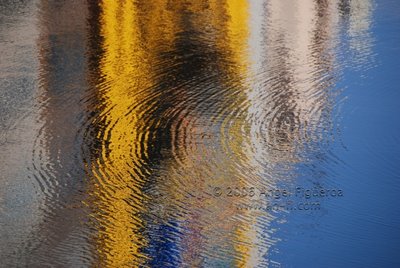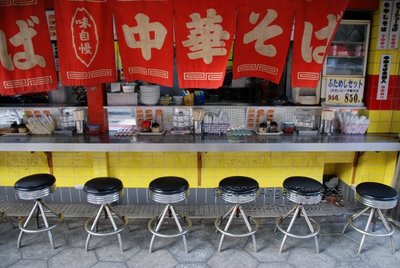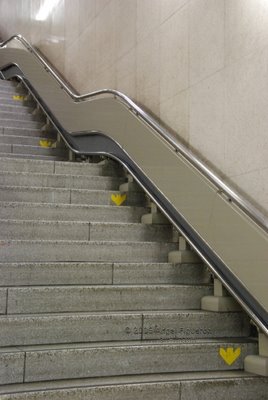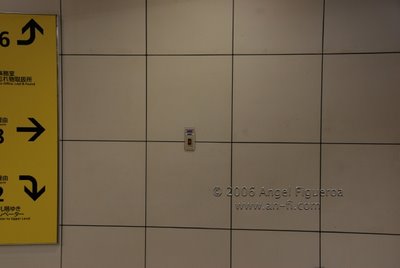Takao-san & Yakuoin Temple
Another trip to Tokyo, and this time the weather co-operated. For the last few weekends I have been looking forward to photographing fall colours, but every time I ventured out there wasn't much to come back home with -- just some shots with a hint of scattered browns and yellows -- not the torrent of blazing red like I keep seeing in all the travel posters in the train stations around Osaka. Taken last year
Taken last year
Despite the allure of cosmopolitan Tokyo, I kept to my custom of seeking nature on the weekends and asked the smiling clerk at the Haneda airport tourist office for good places for nature hikes around Tokyo. This would actually be a first for me: avoid the Tokyo magnet and head for the hills.
After a few suggestions I decided on Takao-san, a 600-metre high mountain about an hour west of Shibuya on the Keio line. Takao-san is well known for the diversity of plants one can see on its well maintained hiking courses. (There are six courses, each with a different theme). Again, the blazing reds would escape me. Another few weeks, I guess. By then the trees would be bare and under twenty centimetres of snow in my home country but Japan --and it's FOUR seasons-- is different. Wait more I must.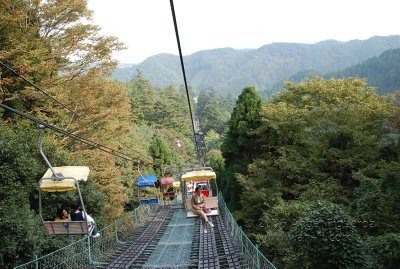 Takao-san chair lift
Takao-san chair lift
It was another pleasant hike. Or --to be honest-- it would have been, had it not been for the chair lift. R had on her high heels so a climb was out of the question but I wasn't about to complain about missing a climb -- we both had been up before dawn to get the early flight to Tokyo and would have to be active until late at night with an engagement in Odaiba. I managed to get a few shots during the 12-minute ride halfway up the mountain, but that was a real challenge, with a bag of sweetened roasted chestnuts fighting for my attention the whole way up. Gosh, amaguri is delicious!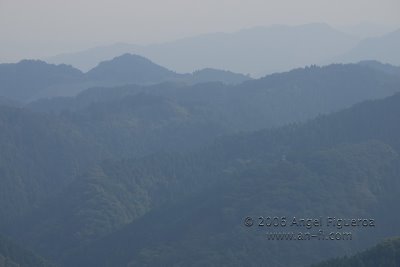 Surrounding hills
Surrounding hills
At the end of the ride, after a few minutes walk, we were rewarded by a spectacular view of the smog that engulfs distant Tokyo. Following the path and mingling with many other day-trippers, we came across Yakuoin Temple, a Shinto-Buddhist site built in 744 by Emperor Shomu. It is noted for its connection with Tengu, a winged, long-nosed deity with special powers who resides in mountains. A number of statues of the mythical being can be seen here, since Takao-san was considered a sacred mountain and thus a centre for mountain worship. Tengu statue
Tengu statue
Yakuoin temple is the main attraction of Takao-san. There is also a monkey zoo, and many interesting trees along the paved paths. Takao-san is also home to a kind of flying squirrel, but I didn't spot any. The views are supposed to be noteworthy, but on this day we could only see smog creeping over the nearby hills. We didn't make it to the mountain peak because we ran out of time. I found this temple somehow different to others I had visited, and I lingered around to take some pictures:
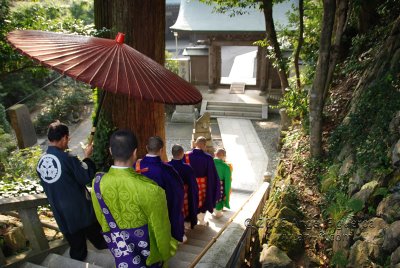


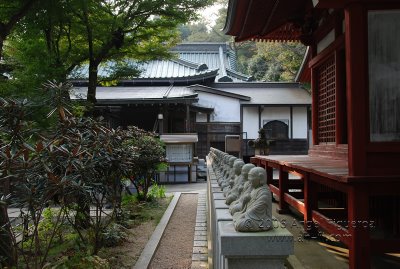
More information on Takao-san can be found here (Japan National Tourist Office).









